 |
|
|
| (Information by Peter Kessler, with additional information from Noble Strategies in an Early Modern Small State: The Mahuet of Lorraine, Charles T Lipp, from The History of the Franks, Volume II, Gregory of Tours (O M Dalton, Trans, 1967), from From Roman Provinces to Medieval Kingdoms, Thomas F X Noble, from Popular Revolt, Dynastic Politics, and Aristocratic Factionalism in the Early Middle Ages: The Saxon Stellinga Reconsidered, Eric J Goldberg (Speculum, Vol 70, No 3, Jul 1995), from Sword, Miter, and Cloister: Nobility and the Church in Burgundy, 980-1198, Constance Brittain Bouchard (New York 1987), from Frankish Kingdoms under the Carolingians 751-987, R McKitterick (1983), and from External Links: the Foundation for Medieval Genealogy, and from Encyclopaedia.com, and Cranach Digital Archive (in German and English), and Special Collections (University of Arizona).) |
|
|
| 1024 - 1039 |
Conrad II 'the Salian' |
Conrad VI of Franconia. Inherited Frankish [Burgundy](FranceBurgundy.htm#Frankish Kingdom of Burgundy) (1032). |
| 1024 |
Conrad II 'the Salian' (of Rhenish Franconia) is also duke of Franconia, and should not be confused with his cousin, Conrad II 'the Younger', future duke of Carinthia, although both are candidates for the imperial throne in this year. Conrad 'the Salian' is married to Gisela, daughter of Duke Herman II of [Swabia](GermanySwabia.htm#Dukes of Swabia).  Conrad (or Konrad) II 'the Salian' of Rhenish Franconia was also Duke Conrad VI of Franconia, and was married to Gisela, daughter of Duke Herman II of Swabia Conrad (or Konrad) II 'the Salian' of Rhenish Franconia was also Duke Conrad VI of Franconia, and was married to Gisela, daughter of Duke Herman II of Swabia |
|
| 1027 - 1030 |
Ernest II of [Swabia](GermanySwabia.htm#Dukes of Swabia) takes part in an unsuccessful rebellion against Conrad II (who is married to Gisela of Swabia, Ernest's mother in her second marriage). As a result, he is captured, but Gisela intercedes to prevent his execution and he is imprisoned instead. It is possible that Gisela governs the duchy during this period. |
|
| 1032 |
As agreed by Rudolf III of [ Burgundy](FranceBurgundy.htm#Frankish Kingdom of Burgundy) in 1006, following his death and with no heir to succeed him, the kingdom (including its Swiss territories) is inherited by Conrad 'the Salian'. Although the kingdom continues to operate with a fair degree of autonomy, from this point onwards, the emperors also count themselves as kings of Arles. |
|
| 1035 |
Count Siegfried I of Spanheim (1010-1065) serves with distinction under Conrad II against Adalberon of Eppenstein, duke of Carinthia. He also soon marries one Richgard, daughter of Count Engelbert of the Sieghardingers of [ Bavaria](GermanyBavarians.htm#Duchy of Bavaria %28Welfs%29).Through this he inherits large tracts of territory in Carinthia and Tyrol and, in 1045, is appointed margrave of the Hungarian march. His son Engelbert becomes margrave of Istria in 1090 and a descendant becomes duke of Carinthia in 1122. 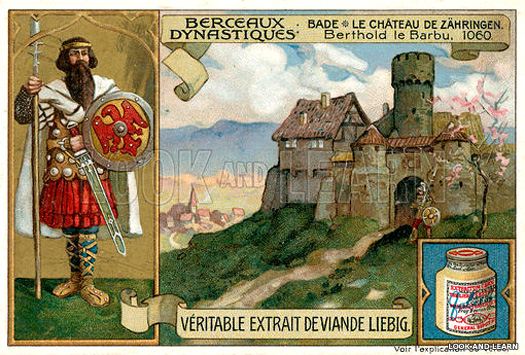 Berthold II of Zahringen gained the duchy of Carinthia and the margraviate of Verona in 1061, but he could do little more than argue ineffectively against the removal of these titles in 1073, five years before his death Berthold II of Zahringen gained the duchy of Carinthia and the margraviate of Verona in 1061, but he could do little more than argue ineffectively against the removal of these titles in 1073, five years before his death |
|
| 1038 |
Duke Herman IV of [Swabia](GermanySwabia.htm#Dukes of Swabia), still a minor at the time of his accession, is campaigning in southern Italy alongside Conrad II. When the young duke is struck down by an epidemic, Conrad ignores the rights to the duchy which are held by Gebhard, son of Herman, and instead transfers it to his own son, Henry 'the Black'. Gebhard retains the county of Sulzbach, whilst his younger brother remains Adalbert I, count of Windberg. Henry also gains [ Burgundy](FranceBurgundy.htm#Frankish Kingdom of Burgundy). |
|
| 1039 - 1056 |
Henry III 'the Black' / Henry of Franconia |
Son. Henry of [ Bavaria](GermanyBavarians.htm#Duchy of Bavaria %28Welfs%29) (VI), Franconia (I) [Swabia](GermanySwabia.htm#Dukes of Swabia) (I), & [ Burgundy](FranceBurgundy.htm#Frankish Kingdom of Burgundy). |
| 1046 - 1047 |
William Iron Arm has not been recognised as count of Apulia by Henry III, probably due to the fact that the emperor has played no part in creating the title of duke or count of Apulia or in granting either title to their holders. Now, upon William's death, and in an effort to take control he removes the ducal title from Guaimar IV of Salerno and grants it to Drogo. He is created Dux et Magister Italiae comesque Normannorum totius Apuliae et Calabriae - although he is still regarded as only a count - and becomes a direct vassal of the emperor. 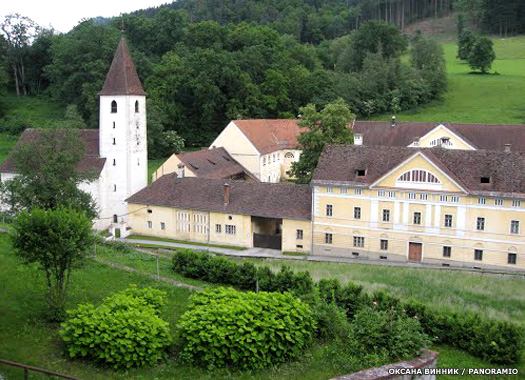 The Benedictine St Paul's Abbey in the Lavanttal (Benediktinerstift Sankt Paul im Lavanttal) was founded in Carinthia in 1091 by Count Engelbert I of Spanheim-Ortenburg, margrave of Istria and father to dukes Henry IV and Engelbert of Carinthia, and now lies in eastern Austria of which Carinthia is a part The Benedictine St Paul's Abbey in the Lavanttal (Benediktinerstift Sankt Paul im Lavanttal) was founded in Carinthia in 1091 by Count Engelbert I of Spanheim-Ortenburg, margrave of Istria and father to dukes Henry IV and Engelbert of Carinthia, and now lies in eastern Austria of which Carinthia is a part |
|
| In 1047, Henry visits southern Italy to demand homage from the dukes of the south. He returns Capua to Pandulf and takes Aversa and Melfi directly under his suzerainty. Finally, he deprives Guaimar of his title over Apulia and Calabria. The emperor also besieges Benevento, where Empress Agnes is being held while the gates are shut to him. At that point, Daufer, the future Pope Victor III, and brother of Pandulf III of Benevento, flees the city and seeks Guaimar's protection. |
|
|
| 1053 |
In opposing Henry III, Baldwin 'the Pious' of Flanders seizes Thuin and Huy, important towns in the principality of Liège, destroying them almost entirely. These had been the emperor's main strongholds in the Sambre-Meuse region. The powerfully fortified centre of Huy defends both the passage of the Meuse and access to the Condroz region and the Ardennes, creating a strong barrier to the territorial ambitions of the counts of Namur and Leuven, as well as to military expeditions by the counts of Flanders and Hainaut.  Notger, the founding prince-bishop of Liège (980-1008) and advisor to four of the Saxon kings of Germany, as featured on a postage stamp of 1947 Notger, the founding prince-bishop of Liège (980-1008) and advisor to four of the Saxon kings of Germany, as featured on a postage stamp of 1947 |
|
| 1056 - 1106 |
Henry IV |
Son. Henry of Franconia. 'King of Germany' until 1084. |
| 1064 |
The margraviate of Baden is formed in eastern-central [Swabia](GermanySwabia.htm#Dukes of Swabia) during the general political collapse in Germany which dominates this century. The rebellion of Rudolf of Rheinfelden becomes known as the Great Saxon Revolt, with him being succeeded in his opposition against Emperor Henry IV by Berthold I of Rheinfelden, Hermann of Luxemburg, and Conrad of Franconia. |
|
| 1070 - 1073 |
Duke Otto II of [ Bavaria](GermanyBavarians.htm#Duchy of Bavaria %28Welfs%29) is intent on extending his duchy. This brings him into conflict with Henry IV who covets the same lands on his southern border. A dubious charge of plotting to assassinate the emperor is levelled against him by the Hessian Count Giso II and Adalbert of Schauenburg, probably with the emperor's full knowledge. Otto is deposed as duke of Bavaria, deprived of his Saxon lands, and pronounced an outlaw. At Pentecost in 1071 he submits to Henry who has him arrested until July 1072. Then he is released and his personal domains returned to him - but not his extensive fiefs. In 1073 his followers murder Count Giso and Adalbert. 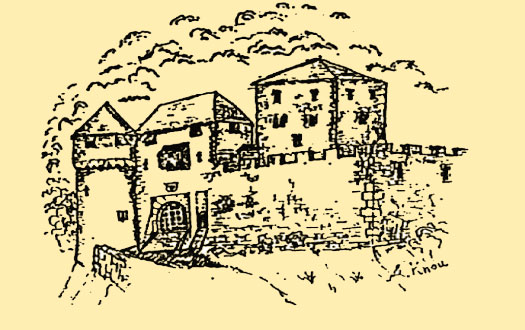 A sketch of Burg Hollende (dated 1247), the family seat and probable home of Hessen's Giso dynasty, showing what was probably the complete castle A sketch of Burg Hollende (dated 1247), the family seat and probable home of Hessen's Giso dynasty, showing what was probably the complete castle |
|
| 1075 |
German chronicler Adam of Bremen discusses a people who are known as Kvens in his work, Gesta. He refers to Kvenland as 'Terra Feminarum', or 'Women's Territory', paralleling remarks made by Tacitus in AD 98. |
|
| 1076 - 1122 |
A long-running investiture controversy is triggered when the Pope challenges the authority of European monarchs to control appointments (investitures) for church officials in their own countries (such as deciding who to appoint as a bishop, for example). It is another step in restoring the power of the church and one which is not resolved until a compromise is reached under the terms of the Concordat of Worms in 1122, but the Holy Roman empire, the main papal opponent in the dispute, is permanently weakened by it. 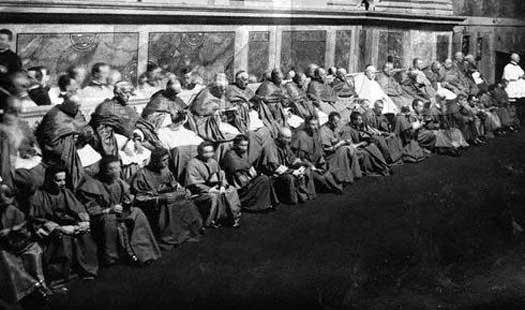 The Catholic Church's college of cardinals (seen here in 1922) was formed in Rome in 1061 to elect the pope, one of the highly important reforms which were enacted by Pope Nicholas II The Catholic Church's college of cardinals (seen here in 1922) was formed in Rome in 1061 to elect the pope, one of the highly important reforms which were enacted by Pope Nicholas II |
|
| 1077 - 1080 |
[Rudolf of Rheinfelden] |
Rival. Duke of [Swabia](GermanySwabia.htm#Dukes of Swabia) (1057-1079). Died following battle. |
| 1080 |
Anti-Pope Clement III is appointed by the exasperated Henry IV. The emperor has already been excommunicated twice by Pope Gregory VII for opposing his reforms which will involve a loss of established imperial power over the papacy. In the same year, the bid by Rudolf of Rheinfelden to oppose Henry IV and secure the throne fails when he is fatally wounded during the Battle on the Elster on 15 October 1080. Despite his forces beating those of Henry, his rebellion falls apart without his leadership. |
|
| 1081 - 1093 |
[Hermann of Luxemburg] |
Rival. |
| 1093 |
To confuse the issue of who governs the duchy of (eastern) Franconia, the Salian counts in Rhenish Franconia to the west are sometimes referred to as dukes of Franconia (HRE Conrad II 'the Salian' being a prime example), but seemingly only after gaining the title of Holy Roman emperor and thereby the (eastern) duchy of Franconia. Now, in 1093, the Rhenish Franconian territory of those western Franconians is granted as a fief to the palatine count of Aachen, progenitor of the 'Electoral Palatinate'. 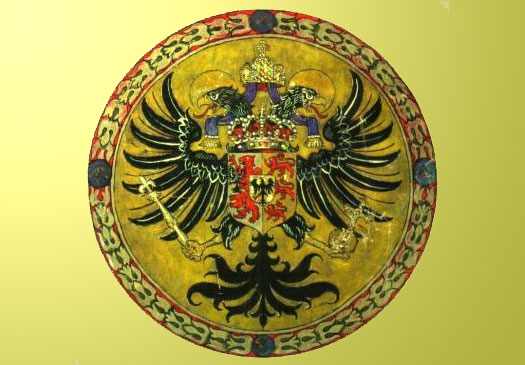 The Hohenstaufen family of Swabia gained a strong foothold on power in the late eleventh century and went on to supply an entire dynasty of German emperors which included Frederick Barbarossa The Hohenstaufen family of Swabia gained a strong foothold on power in the late eleventh century and went on to supply an entire dynasty of German emperors which included Frederick Barbarossa |
|
| 1093 - 1101 |
[Conrad of Franconia] |
Rival. |
| c.1100 |
Torbeno, giudice of Arborea on Sardinia, signs a charter which permits Nivata, Torbeno's mother, to dispose as she wishes of her castles of Massone de Capras and Nuraghe Nigellu. She donates them in perpetuity to the Holy Roman emperor, whom she refers to as Torbeno's overlord. This is the earliest acknowledgement in writing that Arborea at least is subject to the Holy Roman empire, along with much of northern Italy at this time. It is entirely possible that the rest of Sardinia also acknowledges this position. |
|
| 1106 - 1125 |
Henry V |
Son of Henry IV. m Matilda, daughter of Henry I of England. |
| 1107 |
The establishment of the German duchy of [Pomerania](EasternPomerania.htm#Duchy of Pomerania) leads to more and more conquest of native lands on the southern Baltic coast and a gradual end to native rule. This is the beginning of the German crusades at the eastern end of the Baltic Sea but it also destroys variousPolabii groups along the Elbe. 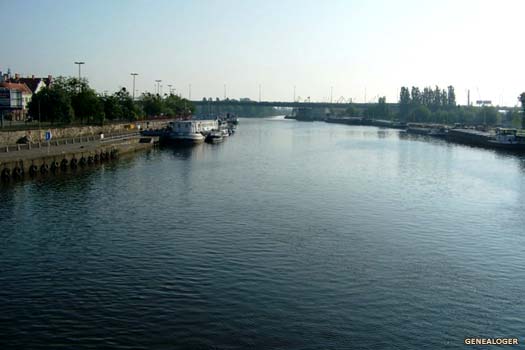 Stettin in Pomerania was for a brief time controlled by Poland during one of that state's many forays into Pomeranian lands in an attempt to control the pagan natives (and possibly also to block similar German incursions) Stettin in Pomerania was for a brief time controlled by Poland during one of that state's many forays into Pomeranian lands in an attempt to control the pagan natives (and possibly also to block similar German incursions) |
|
| 1115 |
Duke Lothar of Saxony effectively transforms himself into the head of a Saxon nation when he breaks Germanic imperial power following a long-simmering dispute between himself, Henry V, and several other notable German leaders. The Battle of Welfesholz, near Mansfeld, is fought on 11 February 1115 between Saxon forces and the imperial army, with the latter being sent into flight. Henry V is denied power over Saxony. |
|
| 1122 |
Henry II of Carinthia, also Henry II of Eppenstein, dies without an heir. With him dies the family of Eppenstein in the male line. Only his sister, Hedwig, survives him. Her son, Henry, becomes the next ruling duke of Carinthia through this relationship whilst also holding the title count of Spanheim thanks to his father, Count Engelbert I. However, at the same time as this Henry is acceding to his title, Carinthia is again sub-divided. A large proportion of the former Eppensteiner lands in Upper Styria (on the eastern edge of Carinthia) pass to Ottokar VI, margrave of Styria. Unfortunately Ottokar is only briefly able to enjoy his expanded domains. He dies in November of the same year.  Styria was initially centred on Traungau when the region was elevated to a margraviate in the late ninth century, after which the region became one of the lesser players in German imperial politics Styria was initially centred on Traungau when the region was elevated to a margraviate in the late ninth century, after which the region became one of the lesser players in German imperial politics |
|
| 1125 |
Upon the death of Emperor Henry V, his young bride, Empress Matilda, is recalled to the English royal court where she plays a key role in the civil war against King Stephen. Frederick II of [Swabia](GermanySwabia.htm#Dukes of Swabia) puts himself forward as a candidate for the imperial title but is defeated by the successful election of Lothar. Conflict erupts between the two and their supporters. |
|
| 1125 - 1137 |
Lothar II (III) of Supplinburg |
Duke of Saxony. Reigned during instability in German lands. |
| 1127 |
Gertrude, Lothar's daughter, marries Henry 'the Proud', duke of [Bavaria](GermanyBavarians.htm#Duchy of Bavaria %28Welfs%29), margrave of Tuscany and, through that latter title, duke of Spoleto. A strong supporter of Lothar who had helped him in his bid for the German throne in 1125, Henry 'the Proud' now gains control of Saxony as the first of the Welf dukes. |
|
| 1137 - 1138 |
The rivalry for the imperial title between Emperor Lothar and his main opponent, Frederick II of [Swabia](GermanySwabia.htm#Dukes of Swabia), has a destabilising effect on Germany as a whole. Emperor Lothar and his dynastic successors in Franconia are supported by Louis I of Thuringia, but Lothar dies in 1137 on the way back from a campaign against the kingdom of Sicily. 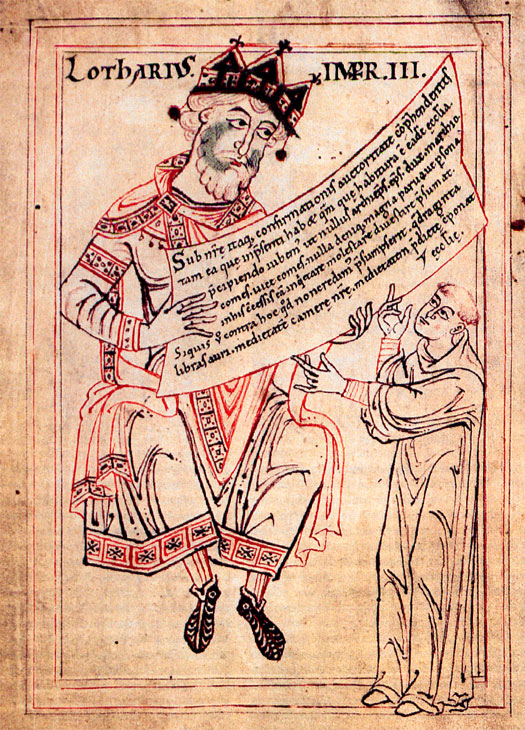 Lothar III of Supplinberg became duke of Saxony through his marriage to Richenza, daughter of Count Henry of Northeim, his inheritance of that title and of the domains of the Billungs, and his initial support for Emperor Henry V Lothar III of Supplinberg became duke of Saxony through his marriage to Richenza, daughter of Count Henry of Northeim, his inheritance of that title and of the domains of the Billungs, and his initial support for Emperor Henry V |
|
| The county of [ Württemberg](GermanyWurttemberg.htm#County of Wurttemberg) is formed in western-central Swabia as another step towards the total disintegration of the duchy during the general political crisis in German lands. The election is held in 1138 to select the next emperor, with one of the candidates being Henry 'the Proud' of Saxony (senior heir to the Saxon House of Billung), Tuscany, and Spoleto. He is defeated by Conrad Hohenstaufen of Franconia, first of the 'Hohenstaufen Emperors'. |
|
|
 |
|
|

 Conrad (or Konrad) II 'the Salian' of Rhenish Franconia was also Duke Conrad VI of Franconia, and was married to Gisela, daughter of Duke Herman II of Swabia
Conrad (or Konrad) II 'the Salian' of Rhenish Franconia was also Duke Conrad VI of Franconia, and was married to Gisela, daughter of Duke Herman II of Swabia Berthold II of Zahringen gained the duchy of Carinthia and the margraviate of Verona in 1061, but he could do little more than argue ineffectively against the removal of these titles in 1073, five years before his death
Berthold II of Zahringen gained the duchy of Carinthia and the margraviate of Verona in 1061, but he could do little more than argue ineffectively against the removal of these titles in 1073, five years before his death The Benedictine St Paul's Abbey in the Lavanttal (Benediktinerstift Sankt Paul im Lavanttal) was founded in Carinthia in 1091 by Count Engelbert I of Spanheim-Ortenburg, margrave of Istria and father to dukes Henry IV and Engelbert of Carinthia, and now lies in eastern Austria of which Carinthia is a part
The Benedictine St Paul's Abbey in the Lavanttal (Benediktinerstift Sankt Paul im Lavanttal) was founded in Carinthia in 1091 by Count Engelbert I of Spanheim-Ortenburg, margrave of Istria and father to dukes Henry IV and Engelbert of Carinthia, and now lies in eastern Austria of which Carinthia is a part Notger, the founding prince-bishop of Liège (980-1008) and advisor to four of the Saxon kings of Germany, as featured on a postage stamp of 1947
Notger, the founding prince-bishop of Liège (980-1008) and advisor to four of the Saxon kings of Germany, as featured on a postage stamp of 1947 A sketch of Burg Hollende (dated 1247), the family seat and probable home of Hessen's Giso dynasty, showing what was probably the complete castle
A sketch of Burg Hollende (dated 1247), the family seat and probable home of Hessen's Giso dynasty, showing what was probably the complete castle The Catholic Church's college of cardinals (seen here in 1922) was formed in Rome in 1061 to elect the pope, one of the highly important reforms which were enacted by Pope Nicholas II
The Catholic Church's college of cardinals (seen here in 1922) was formed in Rome in 1061 to elect the pope, one of the highly important reforms which were enacted by Pope Nicholas II The Hohenstaufen family of Swabia gained a strong foothold on power in the late eleventh century and went on to supply an entire dynasty of German emperors which included Frederick Barbarossa
The Hohenstaufen family of Swabia gained a strong foothold on power in the late eleventh century and went on to supply an entire dynasty of German emperors which included Frederick Barbarossa Stettin in Pomerania was for a brief time controlled by Poland during one of that state's many forays into Pomeranian lands in an attempt to control the pagan natives (and possibly also to block similar German incursions)
Stettin in Pomerania was for a brief time controlled by Poland during one of that state's many forays into Pomeranian lands in an attempt to control the pagan natives (and possibly also to block similar German incursions) Styria was initially centred on Traungau when the region was elevated to a margraviate in the late ninth century, after which the region became one of the lesser players in German imperial politics
Styria was initially centred on Traungau when the region was elevated to a margraviate in the late ninth century, after which the region became one of the lesser players in German imperial politics Lothar III of Supplinberg became duke of Saxony through his marriage to Richenza, daughter of Count Henry of Northeim, his inheritance of that title and of the domains of the Billungs, and his initial support for Emperor Henry V
Lothar III of Supplinberg became duke of Saxony through his marriage to Richenza, daughter of Count Henry of Northeim, his inheritance of that title and of the domains of the Billungs, and his initial support for Emperor Henry V